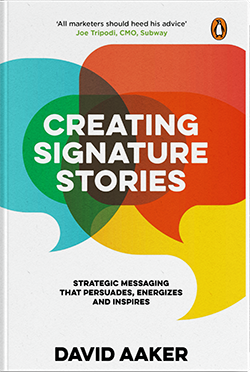BLOG
How to Create Strong Signature Stories
The best stories grab attention and don’t let go, with interesting characters and intriguing details.
What makes an effective signature story – is it one that attracts attention, connects, communicates, is remembered and changes behavior in some way? There is no checklist of story attributes: each great story has its own content and style that come together to impact the listener. However, the definition of a signature story, an intriguing, involving narrative with a strategic message, provides some guiding questions.
Is the Signature Story Intriguing?
Does it grab your attention? Is it thought-provoking, novel, informative, inspiring, exceptionally relevant, humorous and/or awe-creating? If it does not score highly on one or more of these dimensions, it will not gain attention and is thus not a good candidate for a signature story.
“Each great story has its own content and style that come together to impact the listener.”
Consider the story that begins, “It was a drab and rainy day in mid-May 1931 when the 28-year-old Neil McElroy, the advertising manager of P&G’s Camay soap, sat down at his Royal typewriter and wrote perhaps the most significant memo in modern marketing history.” Doesn’t that perk up your ears? Why the memo? Why was it important? Who is this guy? What happened to him? You are instantly drawn in.
Is the Signature Story Authentic?
Do the settings, characters and challenges feel real? Or is the story likely to be perceived as phony, contrived or a transparent selling effort? Is there substance behind the story and its message?
A Skype signature story features Sarah from Indiana and Paige from New Zealand, each born without half of a left arm. Their mothers wanted them to get to know each other, but how do you have a relationship when so far apart? The solution is to use Skype to connect daily so the girls could share their experiences and create a deep friendship. Skype later brought the two girls to New York, where they had an emotional meeting. The authenticity of Sarah and Paige and their story helped to build an emotional response.
Is the Signature Story Involving?
Does it draw people in? Does it make you care? Does a story stimulate a cognitive response, such as a belief change, or an emotional response, such as feelings of warmth or awe? Will it cause the viewer to act—maybe by passing along the story to others? A weak, shallow signature story is likely to result in a passive audience.
Knorr was trying to determine flavor preferences and asked people to have a foodie date with someone they had not previously met, but who had a similar flavor personality as measured by a flavor profiler. The proviso was that they had to feed their partners – no eating on their own. A video of seven participating couples offered fun, humor and many tender moments, and helped generate 100 million views. The audience was drawn into the awkward meeting, the test and the resulting relationships, ultimately creating a signature story for the brand.
FINAL THOUGHTS
In addition to being intriguing, authentic and involving, most strong signature stories are indeed stories instead of facts, have a strategic message, and link back to the brand. Beyond that, they pop on one or more key story elements such as empathetic characters, emotion, tension, surprise, or a challenge to be overcome and are presented with flair and professionalism.
For more details, be sure to check out my book Creating Signature Stories.




